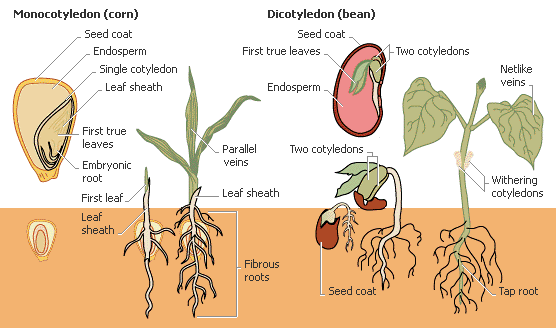TOPIC 1: CLASSIFICATION OF LIVING THINGS
Kingdom Plantae, Division Coniferophyta (Conifers)
General and Distinctive Features of the Division Coniferophyta
Explain general and distinctive features of the division coniferophyta
Division Coniferophyta or the conifers belong to Kingdom Plantae. These plants are gymnosperms meaning non-flowering. They are non-flowering but seed bearing plants. They have vascular tissues. They are woody plants majority being evergreen trees. Few varieties are shrubs
What are the general and distinctive features of the Division Coniferophyta?
General characteristics
- They have secondary growth whose thickening can be observed in cross section of a stem revealing annual rings. Secondary Growth is the result of growth Lateral Meristems (Vascular Cambium & Cork Cambium).
- Most of the members of Coniferophyta live in cool climates where they form evergreen forests. They keep their leaves year-round.
- They have a large amount of internodal elongation which allows them to grow faster than the other higher plants.
- They are Xeromorphic, a characteristic that help to protect them from excessive loss of water and therefore adapt survival in extreme habitats.
- Most are large trees while a few are shrubs and other small plants.
- Most of them have hard barks which protect inner softwood.
Distinctive characteristics
- Conifers are non-flowering but seed producing plants.
- They have seeds born in cones shaped structures rather than in fruits.
- They are gymnosperms which mean naked-seed plants because they produce seeds in cones rather than inside an embryo.
- The leaves are needle-shaped and have a thick cuticle for protection and to decrease water loss.
The Structure of Pinus
Describe the structure of pinus
Pines are evergreen, coniferous resinous trees growing 3-80 m tall. The bark of most pines is thick and scaly. They have needle like leaves.
Pines are among the most well- known coniferous trees in the world. They thrive in temperate mountainous regions, but can also survive in tropical spots in the northern hemisphere. Pines live relatively long time than other coniferous plants. They may live between 100 and 1,000 years
- The Stem:The bark of most pines is thick and scaly, but some species have thin, flaking bark. The branches are produced in regular whorls appearing like a ring of branches arising from the same point.
- Leaves:A cross-section of pine stem has several concentric rings with distinct borders between each ring. The center of the stem is called pith. These rings are called annual rings because they grow seasonally and they help a plant to undergo secondary thickening. Generally adult pines have needle-shaped leaves which are green and photosynthetic. The leaves are in bundles or clusters. The leaves (cotyledons) on seedlings are borne in a whorl of 4–24. Juvenile leaves, which follow immediately after seedlings, have single, green leaves arranged spirally on the shoot. They also have non- photosynthetic scale leaves, similar to bud scales. They are arranged spirally like the juvenile leaves.
- Cones:A cone is an organ of pines that contains the reproductive structures. The woody cone is the female cone, which produces seeds. The male cones, which produce pollen, are usually herbaceous and much less conspicuous. Explain the advantages and disadvantages of the Division Coniferophyta The advantages and disadvantages of the Division Coniferophyta
The Advantages and Disadvantages of the Division Coniferophyta
Explain the advantages and disadvantages of the division coniferophyta
Advantages of Conifers
- Conifers are very important for our economy because of their softwood, which is used for paper and timber, as well as cedar which many people use for their homes because of its beauty and resistance to insects. They have a large economic use as softwood in furniture. In temperate and tropical regions, they are fast-growing softwoods that will allow harvesting in close succession.
- Decoration and ceremony Many pine species make attractive ornamentals. They are planted in parks and larger gardens. Some varieties are suitable for smaller spaces. Pines are also commercially grown and harvested for Christmas trees.
- As medicine, Pines and cypress are rich in vitamin; their branches cones and oils can be extracted and used as nutrient supplements.
- Due to its soft texture conifers are widely used to manufacture Play wood.
- As other higher plants conifers are source of heat energy, used as firewood and charcoal.
- Thick forests of conifers form green belts that modify the climate.
- Conifers form a large arena for Biological research Ecological studies.
- Food uses: Some species have large seeds, called pine nuts that are harvested and sold for cooking and baking. The soft, moist, white inner bark (cambium) found clinging to the woody outer bark is edible and very high in vitamins A and C. It can be eaten raw in slices as a snack or dried and ground up into a powder for use as bread flour. Also White Pines are rich in Vitamin A and C; flour can be made from the Pine tree’s inner bark. By chewing bark of pine you can eliminate bad breath. Pines can reduce the pain of skin infections by applying warm pine sap.
Division Angiospermophyta (Flowering Plants)




